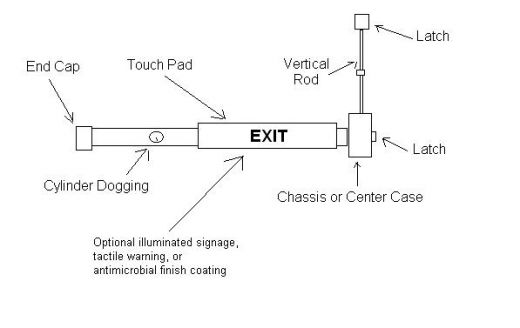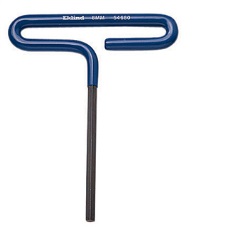Written by LockNet Technical Service Representative, Dillon Campbell
We were told that we need to install exit devices on our storefront doors. What options do we have so that the doors will always be unlocked?
When you think of an exit device, you typically picture a door that is locked from the outside and allows free egress from the inside. Right? Well, this is problematic for a lot of applications, namely storefront doors. Can you imagine having to let your patrons in every time they came to the door?
The good news is there is a sub-set of panic bars with a unique feature that allows you to keep the door unlocked. What is this feature you ask? It’s called “dogging.” A dogging panic bar is doggable.
Now, what exactly does “doggable” mean? Standard exit devices (without dogging) are intended to keep the door locked when the door is closed, while allowing the door to be opened at any time from the inside.
However, exit devices with dogging capabilities are designed to keep the bar unlocked from both the inside and the outside until the dogging feature is disabled. This is ideal for exterior customer entrance doors that may require panic hardware due to fire code.
Types of Dogging Hardware
There are two main types of dogging mechanisms: mechanical and electrical.
Mechanical dogging devices work one of two ways. They can either use a regular key or employ the use of a special Allen/hex wrench tool. When turned, this hex wrench, will allow free access from either side of the door by either directly retracting the locking latch or by depressing the operable part of the bar.
An interesting video demonstrating this can be found right here.
Electrical dogging devices are typically found in situations where electronic access control is also needed. The exit device is wired into an access control system that runs a motor inside the bar. This motor can then retract the latch and/or the bar for a pre-determined amount of time.
Usage Tips
Okay, so now we know how this stuff is supposed to work but how can we keep it working? There are a couple basic steps you can take to ensure the best possible life span for your dogging hardware.
• Push in, then turn: Most panic hardware with mechanical dogging will pull the bar itself in (like if it was pushed) to retract the latch. It’s very important that when engaging the dogging function that you push the bar in before using the dogging key. This will avoid putting extra stress on the internal components and subsequently decreasing the life span of the hardware.
• Use the right tool for the job. If your panic bar’s dogging feature uses an Allen/hex wrench tool to operate, it’s important that you try to use the manufacturer provided tools. If a replacement is needed, ensure the wrench purchased is an exact match in size to the original. We often get reports from technicians in the field that the wrench being used is smaller than the original; therefore it doesn’t fit properly and fails to engage the dogging mechanism. This can occasionally damage the internal parts in the process. Also, don’t go overboard. It’s best to avoid wrenches like the one pictured below. They make it too easy to over-torque the dogging mechanism and damage its components.
Are you using any dogging devices in your facility? How’s your experience been in day-to-day operations?



PLEASE PROVIDE DETAILS OF DOGGING PANIC BARS TO FIT SINGLE ALI. DOOR IN A SCHOOL
WE MANUFACTURE SMARTS SMART WALL THERMALLY BROKEN SYSTEM. OPEN OUT DOOR.
WE NEED TO KNOW IF YOUR DOGGING PANIC BAR WILL FIT OUR ALI. DOOR
PLEASE PROVIDE PRICES AS WELL FOR ONE KIT ASAP
MANY THANKS. DAVID.